Have you ever wondered how small dairy farms are transforming the sustainable agriculture landscape? Small dairy farms are doing something almost unbelievable—they’re reshaping eco-friendly farming and potentially upending the agricultural industry's status quo.
With the growing emphasis on sustainability and local sourcing, understanding the cutting-edge practices of these small-scale dairy farms has never been more crucial—especially as we face global food and environmental crises.
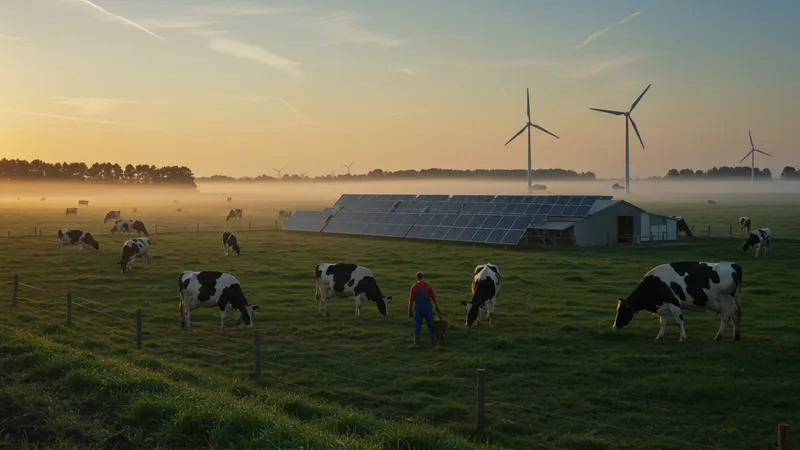
Surprisingly, many of these farms are not just surviving but thriving, employing innovative techniques that big dairy corporations could only dream of. Did you know some small farms achieve higher milk quality standards than their larger counterparts? Their secrets involve a mix of technology, traditional wisdom, and a splash of creativity. But that’s not even the wildest part…
You might assume that competitive pricing would be impossible for these small-scale dairy farms, given their size and resources. However, many are crushing this notion with strategic partnerships and community-supported agriculture initiatives, offering fresher products at reasonable prices. But what happens when they start leveraging AI-driven insights to predict consumer trends? What happens next shocked even the experts…
Unbeknownst to many, small dairy farms have unlocked a hidden economic advantage. By streamlining operations and cutting out the middlemen, these farms manage to offer competitive pricing on their products. This is a massive boon in an industry dominated by giant corporations squeezing smaller players. But that’s not all; some of these farms have adopted new technologies like blockchain to ensure transparency, securing better deals with suppliers and customers alike. What you read next might change how you see this forever.
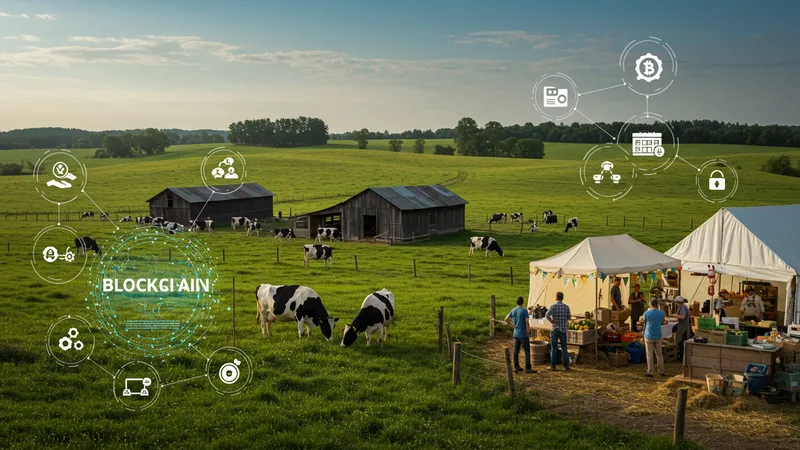
Community involvement plays a huge role in the success of small dairy farms. From local farmer's markets to CSA (Community Supported Agriculture) programs, these farms have tapped into a lucrative market of eco-conscious consumers eager to support sustainable agricultural practices. The results have been astounding, with many farms reporting a 30% to 40% boost in direct sales. But there’s one more twist that catches everyone off guard—the inclusion of digital marketing strategies. The next revelation will absolutely amaze you.
Stepping beyond conventional methods, small dairy farms have embraced digital platforms to their advantage. By leveraging social media and e-commerce, they're building broader customer bases far beyond their local communities, increasing sales without compromising on quality. This approach not only provides a steady revenue stream but also expands their brand's reach. They showcase their ethically produced milk and artisanal cheeses to a global audience—compelling, right? There’s more than meets the eye, though…
Amidst all these innovations lies a potential game-changer—micro-lending practices allowed these small operations to thrive even during economically challenging times. Several farms have also explored collaborative financing models, sharing resources and expertise to mutual benefit. The synergy not only boosts production capabilities but also fosters a sense of community spirit that larger farms simply can't offer. This deep dive reveals complexities and intricacies previously overlooked!
For small dairy farms, technology isn’t just about enhancing productivity; it’s a lifeline—virtually a partner in ensuring eco-friendly operations. Dairy farmers now use precision farming tools to eliminate waste, enriching farming ecosystems and enhancing soil health. But in a startling twist, these tools also allow farmers to monitor animal health more accurately, significantly reducing the necessity for antibiotics. What happens when a farmer becomes a tech-savvy entrepreneur? Keep reading.
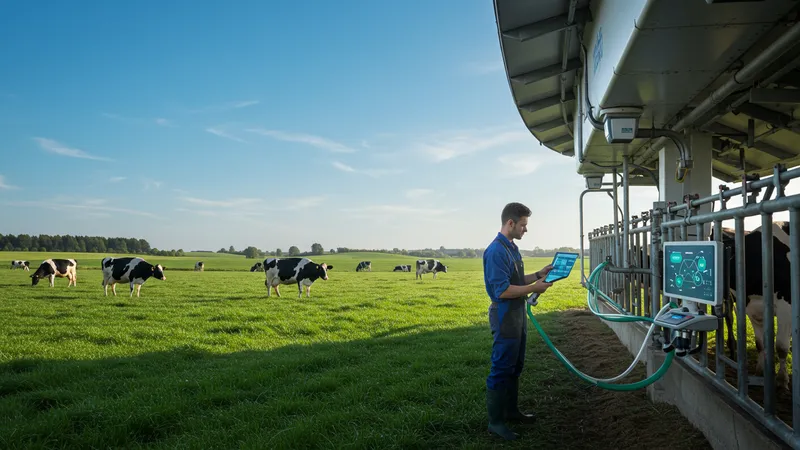
Meanwhile, the use of automated milking systems is slowly becoming the norm even on small farms. These systems drastically reduce labor time and increase milk yield without stressing the animals. Surprisingly, these state-of-the-art systems, once thought accessible only to large enterprises, have become more affordable, allowing small farms to compete on a level playing field. You won’t believe the impact this tech-savvy mindset has had on milk quality, positively influencing everything from taste to nutritional value!
Another fascinating tech application is in energy use. Many small farms are turning to renewable energy sources, installing solar panels and wind turbines to power their operations. This shift not only reduces their carbon footprint but sets the stage for a new level of self-sufficiency. Discovering how these innovators save money and better serve the planet may make you rethink everything you knew about traditional farming. Curious to know more?
Artificial intelligence has also made its way into the fields, revolutionizing data collection and management. Farms can now predict weather patterns and optimize planting and grazing schedules to align with natural cycles. This data-driven precision ensures maximum output with minimal resource input, making sustainable farming a feasible reality for these small businesses. It's this unique combination of tradition and innovation that continues to astonish industry veterans.
By adopting sustainable practices, many small dairy farms are helping to mitigate climate change's impacts. These practices include rotational grazing, which maintains pasture health and enhances biodiversity. But the surprising twist is the impact of these conscious decisions on the milk itself. It’s richer in omega-3 fatty acids and other beneficial nutrients, shaking up the nutrition world. What could dairy possibly do for our health and planet next?
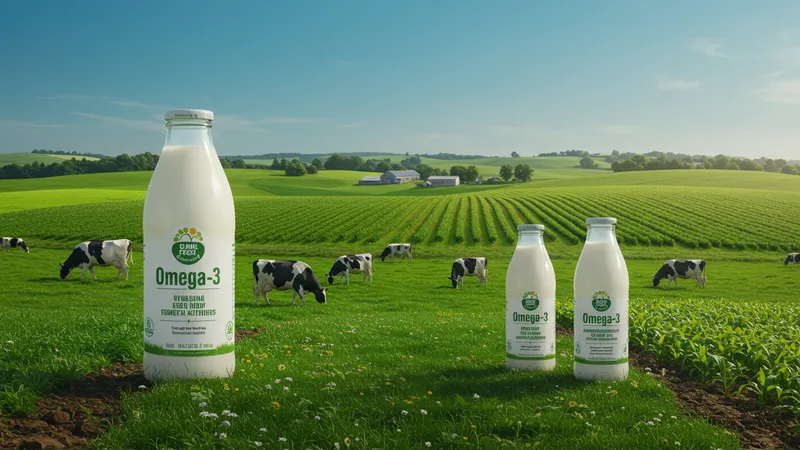
Soil health plays a vital role in sustainable farming, and small farms take this commitment seriously. Regenerative practices, such as cover cropping and no-till farming, have a profound effect on carbon sequestration, contributing to a noticeable reduction in greenhouse gases. These methodologies have even caught the attention of policymakers and environmentalists worldwide, ushering in a new era of agri-policy. What's the domino effect on other crops and industries? Prepare to be surprised.
Water conservation is another area where these farms shine. Techniques like rainwater harvesting reduce dependency on traditional irrigation methods while maintaining high productivity levels. It’s no small feat that these water-savvy farms are producing a leading milk product with minimal resource strain. But there’s more at stake here than just water—how about economic resilience?
This resilience extends to business models as well. Small dairy farms have diversified into agritourism, inviting visitors onto the farm to learn, taste, and experience dairy production firsthand. This not only creates an additional revenue stream but helps educate the public on sustainable agriculture’s importance. It breaks down barriers and dispels myths, bridging the gap between rural and urban communities. Just imagine the widespread impact of these eye-opening experiences!
Interestingly, governmental policies have also started to focus on supporting small dairy farms. Grants and subsidies have been instrumental in helping these farms innovate and remain sustainable. But what happens when these policies falter, and the onus falls back on the farmers to find alternative solutions? Their resilience continuously defies odds, and the stories are astonishing! Keep reading to discover some unexpected allies.
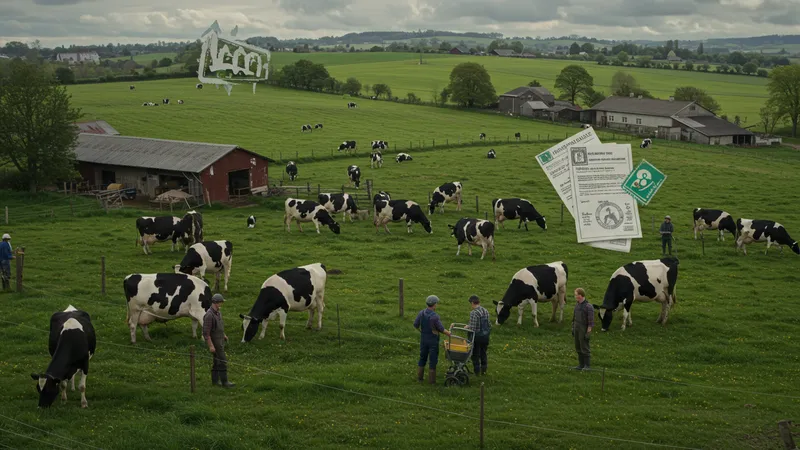
There’s been a push for fair-trade certifications that ensure farmers receive a fair price for their products. Small dairy farms are at the forefront of these initiatives, promoting ethical standards from cow welfare to environmental management. This paradigm shift ensures a sustainable product lifecycle. The movement is gaining traction and even larger organizations are taking notice—but who’s really driving these changes behind the scenes?
Another key player in this transformation is the non-profit sector. Various organizations help small dairy farms by providing educational resources, market access, and financial support. This symbiotic relationship has empowered numerous farms to innovate and expand without losing sight of their sustainability goals. Is there a possibility for more collaborative efforts? We explore the untapped potential of partnerships next.
While many benefits of government intervention are clear, challenges abound too. Bureaucratic red tape and unpredictable policies can sometimes stifle innovation. Yet, these constraints have led to a community-driven network where farm owners share resources and knowledge to thrive collectively. It's a testament to human ingenuity that will leave you with a renewed admiration for the small dairy sector’s grit and determination to succeed.
Modern dairy science continues to unravel fascinating contradictions. While big milk producers find themselves under scrutiny over ethical and health concerns, small dairy farms are redefining what dairy should be, focusing on animal welfare and sustainable practices. Intriguingly, studies show that milk from these farms often contains higher nutritional value. But the science doesn’t stop there—consider how these findings are flipping long-held beliefs about dairy.
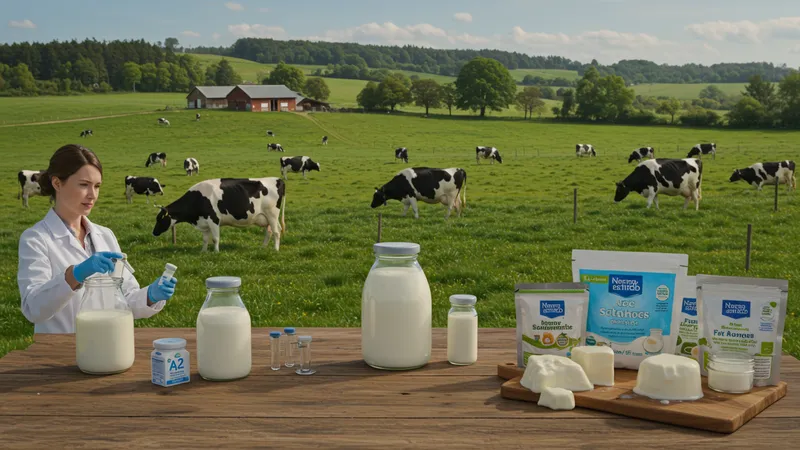
Scientific advancements have led to the development of A2 milk, addressing lactose intolerance issues without compromising milk quality. Small dairy farms have quickly adapted to this trend, finding niche markets and expanding their customer base. But could they also lead the charge in plant-based dairy alternatives, a seemingly contradictory venture? The intersection of dairy and modern biology reveals more than you might expect.
Research into the microbiome of dairy cows uncovers unexpected benefits for consumers. Small farms prioritize natural diets, contributing to a healthier, more balanced microbial ecosystem. As a result, the nutrient profile of the milk aligns more closely with recommendations for a health-conscious diet. So, what’s the catch? Are these benefits universally attainable, or do some hidden complexities await discovery?
This delicate balance of traditional farming with cutting-edge science is compelling. While larger producers scramble to catch up, small dairy farms are ahead of the curve, often partnering with research institutions to push boundaries in dairy innovation. The outcomes not only challenge preconceived notions but pivot the entire dairy industry towards a more sustainable future. What role will small farms play in future scientific advances?
Market dynamics are shifting, with more consumers demanding sustainably produced dairy products. Surveys emphasize an overwhelming preference for locally-sourced, organic options. Small dairy farms have gained an upper hand, as their practices naturally align with these preferences. This trend creates opportunities for growth and innovation, but it also highlights a challenge: scaling these operations without sacrificing integrity. How do they plan to overcome this conundrum?
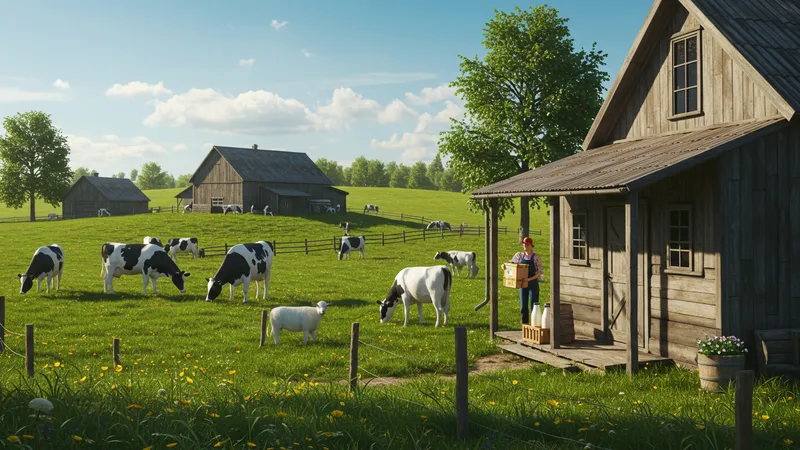
A rising trend is the subscription model, with consumers signing up for regular deliveries of fresh dairy products directly from farms. It eliminates the supply chain's middle layers, ensuring a fresher product and fostering consumer-farmer relationships. The model has proved successful, yet it raises questions about sustainability and logistics. But there’s an evolving narrative here; how this model could become the industry’s gold standard remains an unfolding story.
Transparency has become a selling point, with consumers demanding to know exactly where their products come from. In response, many small dairy farms have introduced open-farm days and virtual tours, offering consumers an inside look. This transparency builds trust and loyalty, yet also pressure to continually innovate and produce at scale. When transparency becomes the norm, who's truly leading the charge in the era of truthful farming?
Social media plays an evident role, offering a platform for small dairies to connect with audiences far and wide. Engaging storytelling and behind-the-scenes glimpses create a ground swell of support, allowing these farms to transcend their small-scale limitations and possibly rewrite the rules of consumer engagement in the process. But can every small farm harness the power of social media effectively? Only time will tell!
The future of small dairy farms is intrinsically tied to several upcoming trends and technologies. On one hand, augmented reality experiences could revolutionize how people perceive and connect with farm operations. On the other, lab-grown dairy products may pose competitive challenges. How these farms adapt to such disruptions could define their future. There’s a seismic shift on the horizon—are they prepared to embrace it?
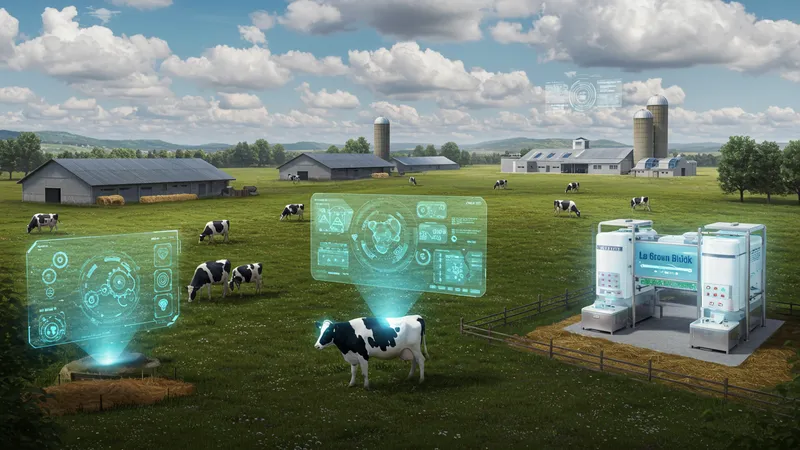
Biotechnology innovations hold remarkable potential. Gene-editing might soon allow for breeds with less environmental impact, altering dairy production's future role in climate change discussions. These technologies are both exciting and daunting; they hold promise yet pose ethical questions. Are small farms ready for this bioethical frontier, or will they maintain their traditional roots?
Policy shifts towards lower carbon footprints may prompt stricter regulations regarding emissions. While small farms already possess an edge with sustainable practices, adhering to new standards might require extra investment and changes in workflow. Yet, these hurdles could catalyze a wave of ingenious solutions, leapfrogging sustainability to unprecedented levels.
Ultimately, the future tapestry of the dairy industry will be woven from sustainable threads pioneered by today’s small dairies. The lessons learned and innovations applied today will guide tomorrow’s agricultural practices, shaping an industry truly aligned with our planet’s ecological rhythms. As these bold dairy visionaries continue their journey, they might redefine not just farming, but the global food landscape permanently.
In conclusion, the transformative power of small dairy farms is a testament to their adaptability, resilience, and foresight. Their embrace of technology, sustainable practices, and community engagement supports a new era of agriculture that’s ethical and environmentally conscious. If their journey has taught us one thing, it’s that small changes, when multiplied, can have a monumental impact. The next steps they take will undoubtedly capture imaginations across the world.
Share their story widely, and become part of the revolution fostering sustainable agriculture. Bookmark this ongoing narrative and witness firsthand how these unsung heroes of dairy are silently breaking barriers. Join us as we venture further into this fascinating domain, one step closer to a sustainable future.